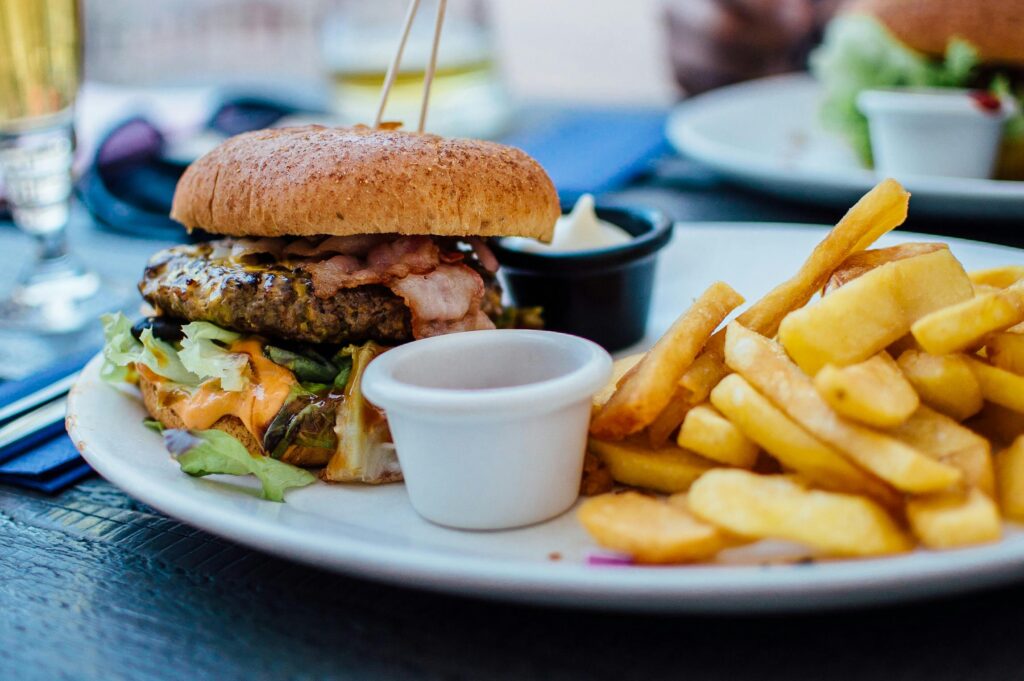A move towards daytime ordering is one of trends shaping the growing delivery market, according to the UK Foodservice Delivery Market Report 2025 by Lumina Intelligence. We flick through the pages to uncover more insights that could help you boost your delivery sales
After a period of disruption and recalibration, the UK foodservice delivery market is forecast to grow +3.1% in 2025 to reach a value of £14.3 billion. While inflation continues to influence value growth, the market is also seeing steady progress in volume terms, supported by improved household confidence among younger and more affluent consumers.
This year’s performance reflects a wider stabilisation trend across the eating-out sector. Delivery now accounts for 10.9% of total market turnover – up +0.1ppt on the previous year, and more than double its 2019 share for traditional fast food and branded restaurant channels. Expansion of delivery-only kitchens and increased integration with third-party platforms have continued to support this evolution.
Consumer demand rebalancing
Penetration of the delivery channel increased by +0.7ppts year-on-year, with 10.6% of UK adults having at least one delivery occasion per week. These increases follow a period of normalisation post-Covid and are being driven primarily by consumers aged 25–34 and those in higher income brackets, particularly in London.
While spend levels vary across the income spectrum, the polarisation of financial resilience is shaping behaviour. In 2025, some households continue to deprioritise delivery due to ongoing cost-of-living pressures, whereas others – especially younger professionals – are increasing their engagement, viewing delivery as a convenient alternative to cooking or eating out.
Lunchtime delivery gains share
One of the more notable shifts in consumer behaviour is the rise of lunchtime delivery. In 2025, lunch has increased its share of total delivery occasions by +1.9ppts to 19.2%. This growth is supported by a combination of promotional activity, lower minimum spends, and operational adjustments by aggregators to encourage ordering earlier in the day.
Consumers choosing delivery for lunch are motivated by value (35.6% of occasions), quality of ingredients (22.7%), and availability of healthy options (16.2%). Restaurants and QSRs have both seen increased lunchtime participation, with occasion share up +3.1ppts and +2.4ppts respectively. Group composition also plays a role – orders placed with friends or colleagues were more prevalent this year, up +3.6ppts and +2.9ppts respectively.
These shifts point to changes in consumer routines, including more flexible working patterns and greater demand for convenience in the middle of the day.

Group occasions and event-led ordering
Group delivery occasions are becoming increasingly common, particularly around events and social gatherings. Delivery occasions involving groups – especially during sporting events like the UEFA Euros and 2024 Olympics – saw increased share and penetration. Activation examples from aggregators, including Uber Eats’ football-focused campaigns, helped capitalise on these peaks.
The presence of friends and colleagues during delivery occasions suggests that shared ordering remains a relevant format, particularly where simplicity and speed are priorities. The role of loyalty schemes in supporting this behaviour is growing, albeit from a low base. Loyalty promotions increased by +1.0ppt year-on-year, but still under-index compared to the total market, suggesting untapped headroom.
Health focus
Across the board, consumers are becoming more selective in their food delivery choices. The importance placed on food quality and health credentials has grown, with healthy food options, which drives outlet choice at 16.2% of occasions at lunch, gaining +6.5ppts share year-on-year. Ingredient quality informs outlet choice in over one in five occasions for lunch, also growing by +6.4ppts.
This trend aligns with broader shifts in health awareness, including the impact of calorie labelling legislation and ongoing scrutiny around HFSS (high fat, salt and sugar) products. Operators seeking to retain delivery customers are adjusting menus accordingly, with notable increases in availability of vegan, vegetarian and lower-calorie options.
Market structure
Branded restaurants and QSRs are forecast to accelerate their delivery turnover, with the top 10 brands across all channels expected to reach a combined £4 billion in 2025. However, the broader market is becoming increasingly fragmented. The share held by traditional delivery players has declined by -22ppts since 2019 as more branded operators and independent channels enter the space.
Much of this change has been facilitated by aggregator expansion, alongside adoption of delivery-only kitchens and white label delivery services. These formats allow operators to extend their footprint and test new propositions without the overheads of physical estates. Aggregators including Uber Eats and Deliveroo have notably increased their share of occasions – Uber Eats alone gained +15.6ppts from 2022 to 2024.
Operational pressures
Despite growth indicators, operators face multiple structural headwinds. The cost of labour remains a major pressure point, compounded by an increase in National Insurance contributions. Amendments to the Employment Rights Bill will also increase the burden on businesses reliant on flexible workforce models, particularly aggregators.
Elsewhere, operators are contending with a reduction in business rates relief and rising energy and material costs. These dynamics are contributing to margin compression and may lead to further consolidation or changes in pricing strategies during the year.

Looking ahead
The outlook for the UK foodservice delivery market in 2025 is one of steady growth underpinned by shifting consumer habits and operational adaptation. While the pandemic triggered a surge in delivery that was unlikely to be sustained, the current phase represents a more balanced period of channel development.
Consumer expectations continue to evolve, particularly around convenience, quality and health. As lunch and group occasions increase in share, delivery is gradually embedding itself as part of routine dining behaviour, not just a weekend or evening treat.
From a channel perspective, we expect to see ongoing segmentation as branded players refine their delivery strategies, and aggregators continue to reshape access and availability. At the same time, operational resilience and flexibility will remain crucial as the market adjusts to new regulatory and economic conditions.
For more information, the full UK Foodservice Delivery Market Report 2025 is available from Lumina Intelligence by clicking here.








